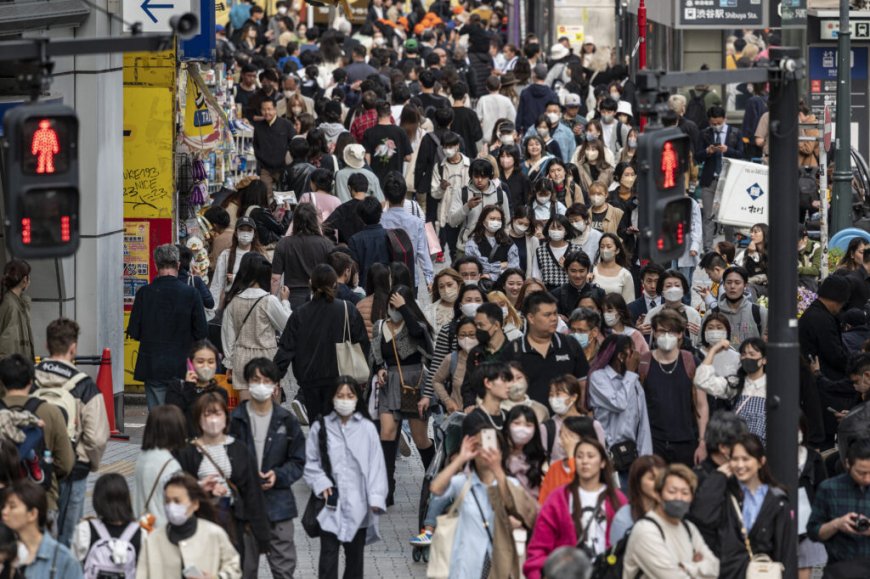Japan’s Population Crashes by Over 900,000 in 2024—A Deepening Demographic Emergency
Official data from 2024 reveals Japan’s population fell by over 900,000 — the largest annual drop on record. Experts warn this demographic crisis could shake Japan’s economy, labor force, and global standing.

Japan is now facing a demographic shock of unprecedented scale. Official figures reveal that in 2024, the number of Japanese nationals dropped by approximately 919,000, the most dramatic annual decrease since data collection began. This decline underscores a rapidly accelerating crisis fueled by record-low births, mounting deaths, and structural social challenges.
Unpacking the 2024 Demographic Collapse
According to Ministry of Internal Affairs and Communications data, Japan’s population shrank to 123.8 million, marking the 16th straight year of decline for Japanese nationals and the starkest drop on record WikipediaBusiness Standard.
The Health Ministry also reported only 686,061 births—a staggering 5.7% fall from the previous year and the lowest since 1899 AP NewsThe Guardian. Meanwhile, deaths soared past 1.6 million, contributing further to the natural decrease.
Compounding factors include the national fertility rate plummeting to 1.15 children per woman, significantly below the 2.1 replacement threshold The GuardianAP News.
Prime Minister Shigeru Ishiba has dubbed the situation a “silent emergency,” while public policy remains largely reactive.
Behind the Numbers: The Root Causes
Several entrenched structural forces are driving Japan’s population collapse:
-
Unrelenting Low Birthrate: Economic insecurity, steep housing costs, and cultural expectations remain core deterrents to family formation. Young adults cite unstable employment and scant gender equality as major inhibitors to marriage and childbearing The GuardianThe Times.
-
Aging Society: Nearly 30% of the population is now aged 65 or older, with the elderly demographic steadily expanding The Economic TimesCNBC. This shift dramatically intensifies pressure on the shrinking labor force.
-
Rural-Rural Exodus and Decline: The number of abandoned homes and communities—especially in remote areas—has surged, signaling economic erosion in rural Japan The Economic TimesTokyo Weekender.
Economic and Social Fallout
Japan’s shrinking population has cascading consequences across multiple domains:
-
Economic Stagnation: A diminished workforce places Japan’s productivity and GDP at risk. The IMF projects long-term growth could be slowed by roughly 0.8% annually due to demographics alone girolino.com.
-
Social Services Under Stress: With fewer taxpayers and increasing dependents, funding health care, pensions, and elder care becomes challenging. For context, Japan's ratio of workers to retirees dropped from 5.8 in 1990 to just 2.3 in 2017—a trend that could slide to 1.4 by 2050 Wikipedia.
-
Strained Infrastructure and Innovation: Depopulated towns lead to underused infrastructure and less innovation, while youth migration concentrates overaged populations in cities TIMETokyo Weekender.
Policy Measures: Incremental Steps Amid Urgency
In response, government and regional authorities are launching several targeted initiatives:
-
Work-Life Reforms: Tokyo has introduced a four-day workweek for government employees starting in April 2025 to enhance work-life balance and support family life Financial TimesBusiness Insider.
-
Parental Incentives and Childcare Support: Expanded childcare subsidies, parental leave reform, and efforts to encourage early marriage are being employed––yet birth declines persist The GuardianThe Economic Times.
-
Selective Immigration: Foreign resident numbers have risen, reaching over 3.6 million by early 2025, helping address staffing gaps in sectors like manufacturing and elder care—but political resistance remains strong The Economic Times.
Looking Ahead: Long-Term Forecasts
If current trends continue unabated, demographic projections estimate:
-
Population could fall to 87 million by 2070, with the elderly accounting for 40% of residents The Guardian.
-
By 2040, Japan may face a labor shortfall of 11 million workers, threatening the viability of key social and economic systems IASPOINTThe Express Tribune.
Experts emphasize that without a cultural shift—especially in gender roles, employment culture, and childcare infrastructure—incremental policy interventions are unlikely to reverse the decline.
Conclusion: A Turning Point for the World’s Most Aged Society
Japan's dramatic population drop in 2024 paints a sobering picture of demographic realities that may soon mirror across other developed nations. It is not solely a domestic challenge; its trajectory offers lessons on managing demographic decline at scale.
A comprehensive policy—encompassing economic incentives, societal reforms, and smarter urban planning—is essential not only to preserve Japan’s societal function but also to uphold its global leadership.











